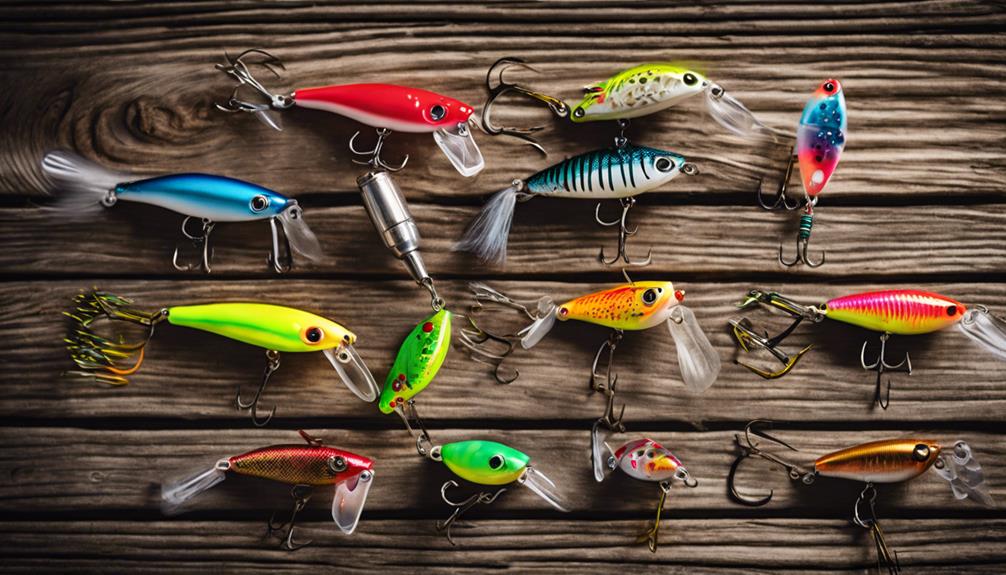1. What is Moonlit Fly Fishing?
Moonlit fly fishing is an enchanting and unique experience that many anglers cherish. This fishing technique is practiced at night, under the glow of the moon, offering a serene and tranquil atmosphere unlike any other. The soft light of the moon creates a magical backdrop, enhancing the fishing experience by providing a peaceful environment to connect with nature. This nocturnal activity allows anglers to target species that are more active during the night, such as trout, bass, and panfish. For those looking to expand their fishing repertoire, moonlit fly fishing offers a wonderful opportunity to engage with the aquatic ecosystem in a new and exciting way.
2. The Best Conditions for Moonlit Fly Fishing
Understanding the best conditions for moonlit fly fishing is critical for success. Clear nights with minimal cloud cover are ideal, as they allow the moonlight to illuminate the water and surroundings effectively. The phase of the moon also plays a significant role; a full moon is often considered the best time for night fishing as it provides ample light, making it easier to spot fish and observe their behavior. Additionally, choosing the right time of year can enhance your experience. Spring and early summer typically offer the most favorable conditions, as fish are more active during these warmer months. Pay attention to local weather patterns and water temperature, as these factors can influence fish activity and feeding habits.
3. Essential Gear for Moonlit Fly Fishing
When preparing for moonlit fly fishing, having the right gear is essential. First and foremost, a quality fly rod and reel designed for night fishing are crucial. Opt for a rod that is lightweight and has adequate length to allow for long casts in open waters. A good selection of flies is also vital; consider using larger, darker flies that can create a silhouette against the moonlit water, attracting the attention of fish. Additionally, don’t forget about your safety equipment, such as a headlamp or flashlight with a red filter to preserve your night vision. Wearing suitable clothing, including layers to keep warm, is also important, as temperatures can drop significantly at night.
4. Techniques for Successful Moonlit Fly Fishing
Successful moonlit fly fishing requires specific techniques that differ from daytime fishing. One effective method is to focus on the edges of light and shadow created by the moonlight. Fish tend to gather in these areas where they can ambush prey while remaining hidden from predators. Casting your fly into these zones can increase your chances of a catch. Slow and deliberate retrieves often work best at night, as fish are more cautious and may be less likely to chase aggressively. Additionally, using a floating line can help keep your fly near the surface, where fish are likely to strike during the night. Experimenting with different retrieves and flies will help you discover what works best in your chosen location.
5. The Benefits of Moonlit Fly Fishing
Moonlit fly fishing offers numerous benefits for anglers seeking a unique experience. One of the most significant advantages is the tranquility that comes with fishing at night. With fewer people on the water, you can enjoy a peaceful environment, allowing you to connect more deeply with nature. Furthermore, many fish species are more active at night, increasing your chances of a successful catch. Moonlit fly fishing also provides a fantastic opportunity for stargazing, as the clear night sky can enhance your overall experience. For those looking to escape the hustle and bustle of daily life, moonlit fly fishing can be a rejuvenating and meditative activity.
6. Safety Tips for Nighttime Fishing Adventures
While moonlit fly fishing can be an enjoyable experience, safety should always be a priority. It’s crucial to familiarize yourself with the fishing area during daylight hours to avoid hazards such as rocks, submerged logs, or steep banks. When fishing at night, ensure you have a reliable light source, such as a headlamp, to navigate the area safely. It’s also wise to fish with a buddy, as this can enhance safety and provide assistance if needed. Always let someone know your fishing plans, including your expected return time, to ensure help is available if necessary. Additionally, be mindful of local wildlife and be prepared for encounters, as many animals are more active at night.
7. Popular Locations for Moonlit Fly Fishing
Certain locations are renowned for their exceptional moonlit fly fishing opportunities. Rivers and lakes with minimal artificial light pollution offer the best experience, as the moonlight can shine brightly on the water. Many anglers recommend heading to national parks or remote areas where the natural environment remains largely untouched. Rivers like the Yellowstone or the Madison River in Montana are excellent choices, as they provide ample opportunities for night fishing. Additionally, tranquil lakes with healthy fish populations, such as Lake Tahoe or the Boundary Waters, can be fantastic spots for moonlit fly fishing. Researching local regulations and obtaining necessary permits is essential before heading out to ensure a smooth fishing trip.
8. Conclusion: Embrace the Magic of Moonlit Fly Fishing
Moonlit fly fishing is a captivating experience that offers a unique blend of challenge and tranquility. From the enchanting beauty of fishing under the stars to the thrill of targeting nocturnal fish, this activity allows anglers to engage with nature in a remarkable way. By understanding the right conditions, utilizing essential gear, and applying effective techniques, you can enhance your chances of success while enjoying the serene atmosphere that night fishing provides. Whether you’re a seasoned angler or a newcomer to the sport, moonlit fly fishing is an adventure worth embracing. So grab your gear, head out into the night, and discover the magic that awaits under the moonlit sky.
